A Time of Veilstones, Creations, and Spells with Godsforge

Activate creations and spells in a battle to outlast a nemesis with a combination of dice and Veilstones in Godsforge.
Years ago, I enjoyed playing Godsforge with my husband. I know: Not solo! Yet a new edition that just came out offers clearer rules and an official solo mode. Exciting! This is a pretty lightweight and quick sort of game, so I was interested to see how a solo opponent might work. My own dice rolls would be the central element… Could I get decent results?
Game Overview
Game Name: Godsforge (Second Edition)
Publication Year: 2019
Designer: Brendan Stern
Artist: Diego L. Rodríguez
Publisher: Atlas Games
Solo Mode: Included in the Base Game
Different creations and spells offer attack, defense, and special abilities. Each turn, dice provide the values that may be used to put these cards into play. The goal is to survive longer than the solo opponent. With some turns that feature 20+ attack damage, it can move very quickly!
First Play
July 16, 2023
Complexity
2
Latest Play
July 17, 2023
Expansions
2
Setup Time
5 Minutes
Lifetime Plays
4
Play Time
10 Minutes
High Score
N/A
Game Area
32" x 18"
Low Score
N/A
Digging Through Cards
Although there is a central board, it doesn’t do much more than keeping track of health values and storing Veilstones. The deck is only used during setup to build decks.
The full solo mode rules are included, yet the actual opponents use specific decks that must be constructed. Their card lists are only available online in PDF format.
Not bad, but then I had to build my deck of 12 cards by drawing 3 at a time, choosing 1 card, and then repeating.
Setup felt a lot longer with these required card draws, but I wasn’t quite sure which would be my best options.
Colorful Custom Dice
I love the bright dice colors used in this game and its expansions! So pretty. In the original edition, these were standard d6s. Easy to read and understand at a glance.
To tie into the elements, these faces are all customized… Even though the value is the only important aspect.
It felt like customizing the dice was unnecessary, as this actually led me to have to study each roll. Things got better, but the 3, 4, and 5 never felt quite “right” to me.
Gameplay is simply about matching the requirements of a single card each turn in terms of the rolled dice. Easy!
Powerful Creations
Everything moved pretty quickly, mostly owing to the fact that the solo opponent simply flipped over the top card of its deck each round. I rolled dice and used Veilstones.
Creations remain out each round, often providing attack or defense. Some had additional abilities, like increasing the hand size to offer more options each round.
I lost consistently despite my best efforts, but it all felt very random. My better cards were near the bottom.
It also felt odd that the solo opponent had a starting card, while my starting hand was always entirely random.
Getting Into a Groove
Interestingly, even though there aren’t too many duplicates, I found myself drawn to the same set of cards. The sword and armor always made their way to me!
But with the right combination finally showing up, I managed to trigger an Elemental Storm and enhance it with Veilstones… It dealt 18 attack damage right there!
The rest of my cards added more, and the solo opponent didn’t have any defense cards out at that point.
I won after a few tries, yet it all felt very swingy. I won based on better luck with my deck, not better decisions.
A Question of Randomness: When Does It Work?
The perfect example of randomness is often found in dice. Although the odds might be known, the results are unknown. Without any ways to adjust values, those rolls are entirely random… Unless you’re the kid in Jumanji trying to drop dice on specific faces, but that turns you into a monkey. Ha ha! This element can actually be pretty fun in solo games.
For quick experiences, if I have to use those dice in some way, I’ll often be limited by what I roll, but still have options open. In this case, the game does that well: I typically had 4 cards in-hand with different dice requirements. Choices were available and I could also make sure that my deck itself had a range of costs to never back myself into a corner.
My issue with randomness came from the card draws. I could discard cards to cycle through my deck faster, but that didn’t solve the idea that I would do much better if a card was in my opening hand vs. at the bottom of my deck. Similarly, the solo opponent always revealed the top card of its deck. Some of those were way too powerful early on.
So… Is it a balance concern? Not really. I could also play devastating effects early on with some lucky dice rolls and card draws. For me, multiplayer is fun when someone spoils my plans by negating something I wanted to do. That’s worth a laugh due to their clever planning! But a solo mode doesn’t have that luxury… It just feels arbitrary and random.
I do think there is an interesting game here when enjoyed in 10-15 minute plays, yet I prefer to have limited sources of randomness in aspects that are paramount. Even if I could keep a starting card in hand to start with, that might be all that’s needed to feel on par with the solo opponent with the chance to set up my creations from the very start.
Session Overview
Play Number: 1-4
Solo Mode: Included in the Base Game
Outcome: 1 Win & 3 Losses
The solo opponent also got lucky with the order of cards. This combination destroyed an expensive creation of mine, and then negated the healing I desperately needed. I can see the idea of learning how a specific solo opponent’s deck might work, but the card order is entirely random. With the somewhat lengthy process to build my own deck and then simply shuffle those 12 cards together, I wasn’t too excited about playing again. Still, it was nice to try!
%
1 Play
Affordability
Price & Value
3
Functionality
Challenges & Mechanics
7
Originality
Design & Theme
5
Quality
Components & Rules
9
Reusability
Achievement & Enjoyment
3
Variability
Distinctness & Randomness
4
+ Pros (Positives)
- Most cards are unique with very different art and colors that give the play space a pretty awesome appearance.
- Some hands offer plenty of options for the card to play, and some chained options offer more choices for the dice.
- Veilstones help adjust dice and power up different abilities to keep a lot of options open from round to round.
- Aside from sifting through the deck during setup, the solo opponent is very easy to run without the need for dice.
- Gameplay moves quickly from round to round with a simple sequence of play that doesn’t require any downtime.
- Not every card will be used during every play, so the required table space remains pretty compact with a few cards.
– Cons (Negatives)
- The need to create a deck during setup feels like a noticeably lengthy process compared to the time it takes to play.
- Random card draws are the main source of success since dice can often be manipulated easily with Veilstones.
- Although the work put into creating a theme and world is excellent, the gameplay is rather dry and bland.
- Custom dice faces may be tied into this setting, yet they’re too similar to standard dice and create pauses in play.
Victory Conditions
Survive the Longest
- Overall Goal Progress 100%
Goals and Milestones
Win at least 1 game.
Continue the Conversation
Have you played Godsforge? What do you think of the solo mode? Although I know this one isn’t for me, I’m sure I’ll enjoy it with my husband. At least I have some extra knowledge of the cards. Ha ha! There are also expansions to try out, although they don’t add anything new to the solo experience. It was still fun to try this one out, though!
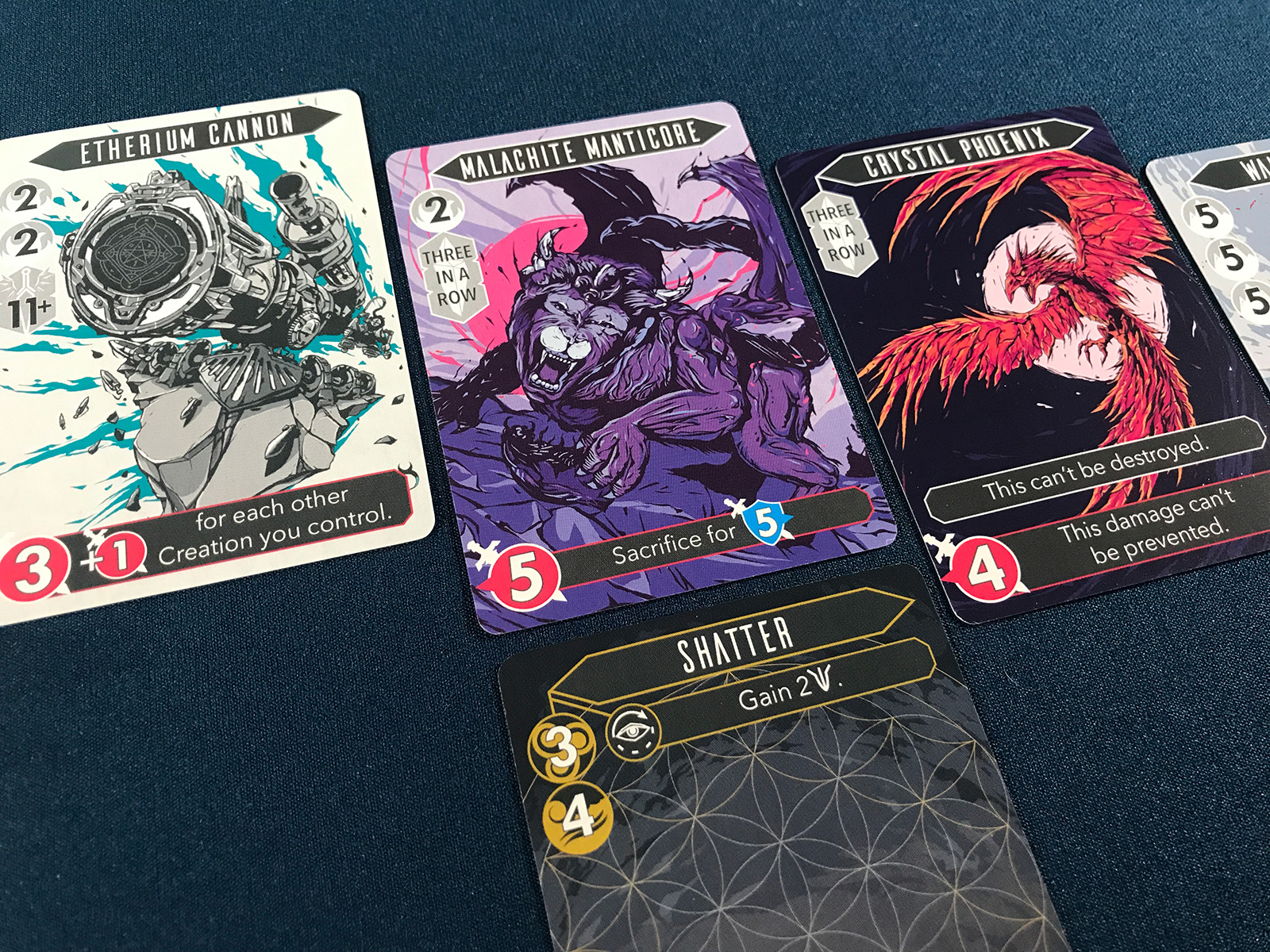
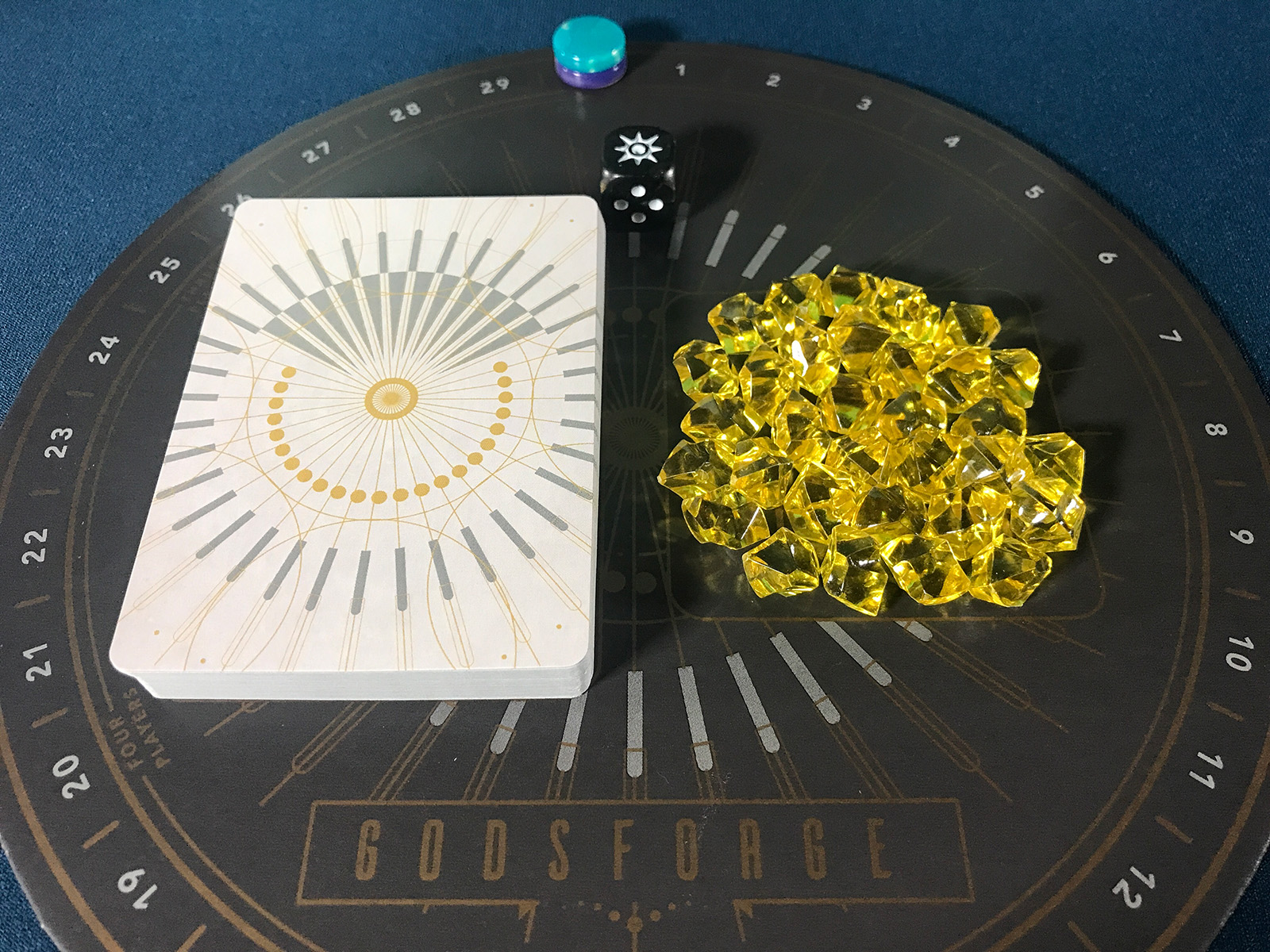
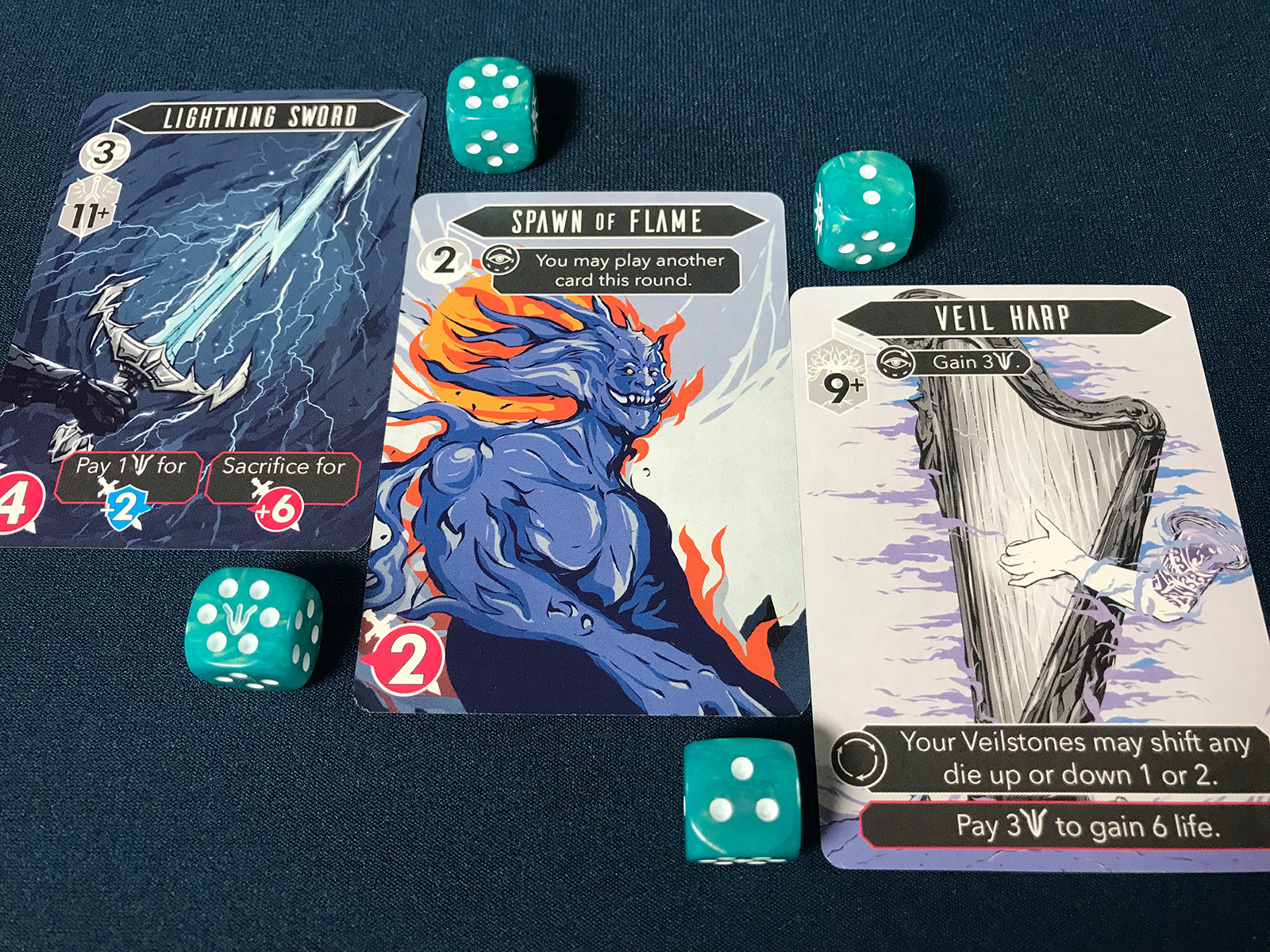
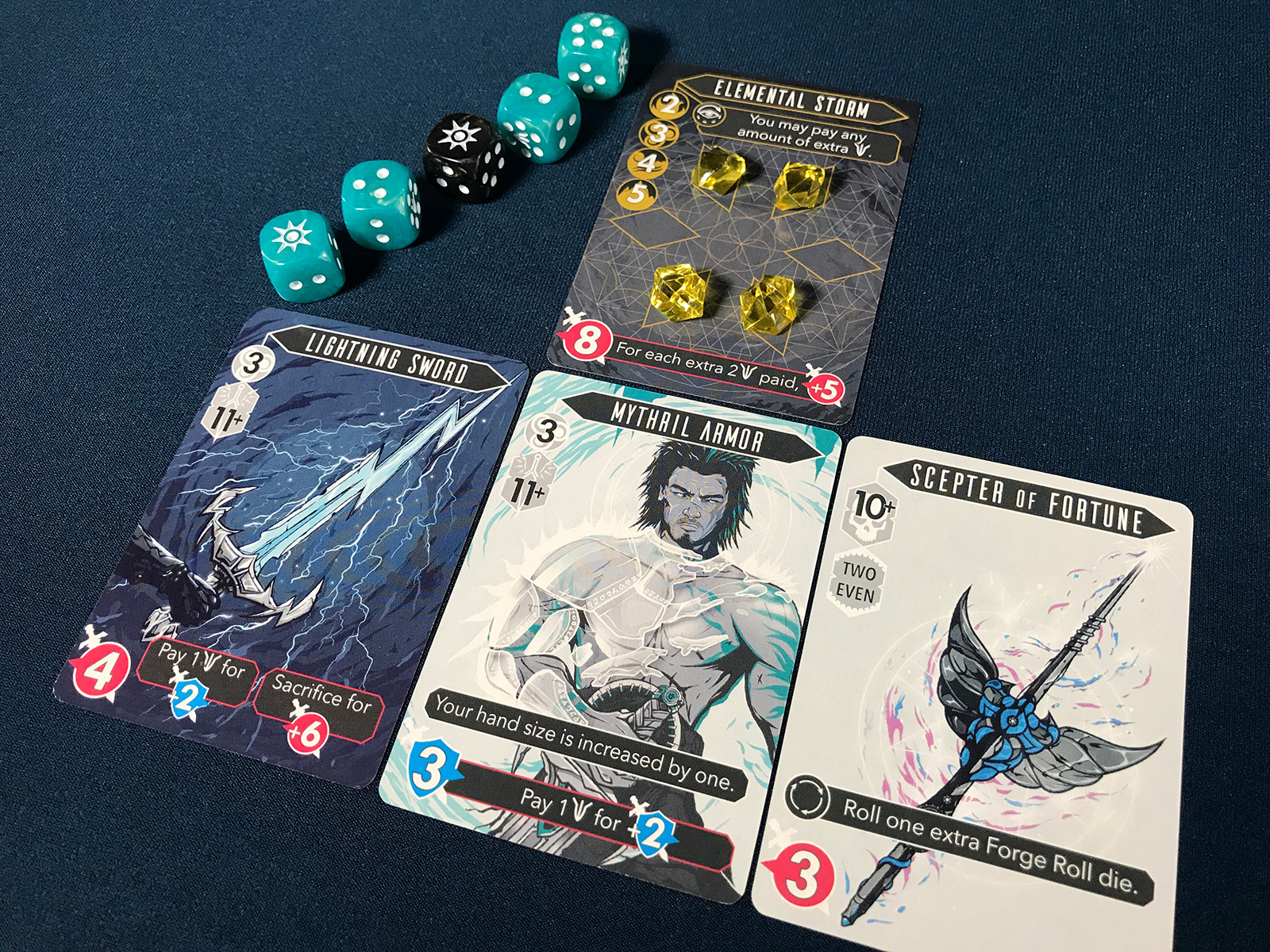
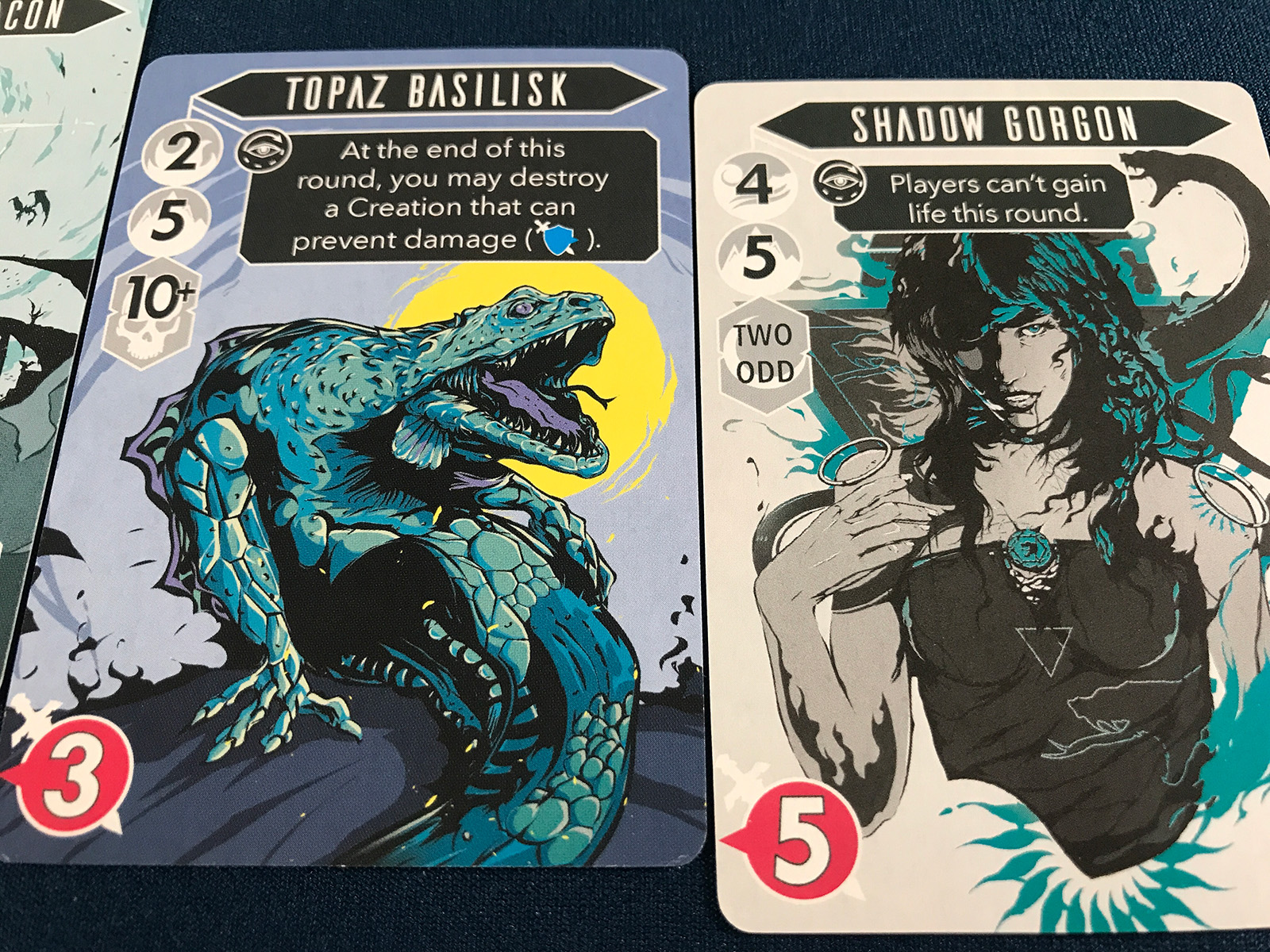
0 Comments